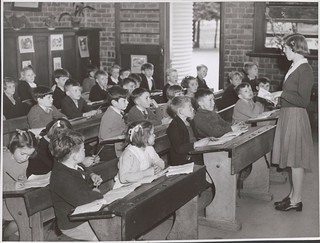When choosing the Social Studies elective I did not realise that art would ever be linked to geography. Geography is about exploring the world around us (Tanner, 2013, pp. 128) and this world can be explored through art. There are several different circumstances where people have expressed how they feel about something through art.
Craftivism is a way in which people express how they feel about something through art. This can be seen as a gentle protest. These people use art to challenge injustice in the world. They use craft and art to express their opinions and encourage conversations to open. Craftivist Collective are a group of people who do exactly this. They use craft to “help themselves and encourage others to have a positive change in the world.” (Corbett, nd). This group do things like send embroidered letters to MPs about issues they they have; make hearts to wear on your sleeve to promote climate change and create banners with material to promote injustices in the world. Now you may ask yourself ‘What is the advantage of doing this over a regular protest or banner?’ The answer is simple, would you walk past a pretty eye-catching cross-stitched banner in the street? Probably not! If something is different then you are more likely to stop, have a quick glance at it and that is what this group needs. By making people stop and look, this means more people see it and speak about it. You are far more likely to remember an embroidered banner or someone wearing a heart on their sleeve than a normal banner.

How does this link to social studies and teaching? This group promote issues that we would normally teach about and discuss in our social studies lessons. Often, at some point in a year of school a social studies lesson will be based around discussing an issue in the news or something that is going on around us, for example, climate change. This sort of issue relates to geography. Instead of the children creating a poster, banner etc they could create something with cross-stitching or embroidery. Anna had us do this in our lecture and as well as make me aware of an issue and want to do something about it, it was fun!
This is a banner that the Craftivist Collective created!
Artists have used art to express themselves on other matters that relate to Social Studies as well. In several art museums throughout the world artists have used their art to express topics that are relevant in social studies. There are several different artists pieces in art museums throughout the world that convey different Social Studies matter or issues. These are great for children to see and discuss as they let children see how Art and Social Studies can be linked together effectively and easily. For children to discuss these different art pieces and what they mean not only develops their discussion skills but also their enquiry and interpretation skills.
References
Corbett, S. (n.d.). Our Story. [online] Craftivist Collective. Available at: https://craftivist-collective.com/our-story/ [Accessed 9 Nov. 2017].
Tanner, J. (2013) ‘Geography and the Creative Arts’, in Scoffham, S. (ed.) Teaching Geography Creatively. London: Taylor and Francis, pp 128-142.


